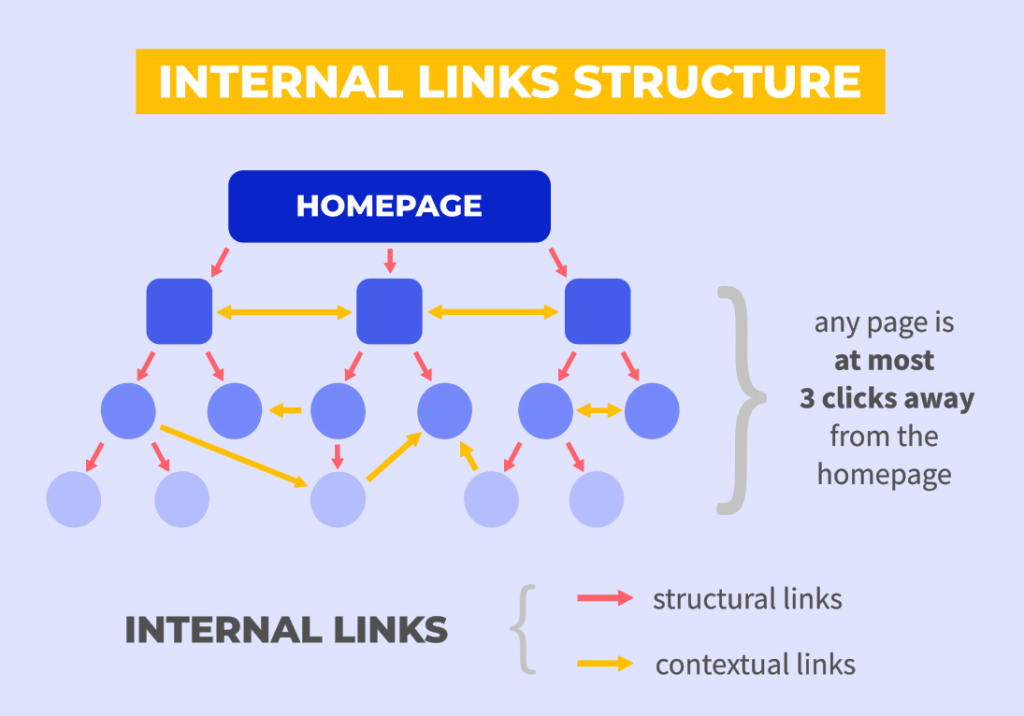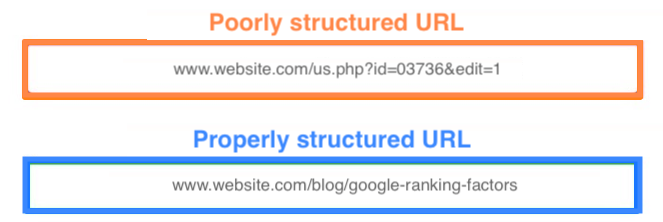It’s difficult to realize we’re already at the end of the year. One of the most crucial aspects to consider are “factors that influence Google rankings“. It’s not too early to think about what new strategies you want to add to your content marketing plan for next year as we say goodbye to 2021 and prepare for the beginning of 2021.
SEO recommended practices change and evolve over time, much like web design trends do. Google is always assessing which criteria suggest a high-quality website for its users. If you want to stay on top of the search engine results pages, it’s important to keep up with these ranking variables (SERPs).
Around 200 ranking signals are used by Google to decide where web pages will be ranked. Fortunately, not all of these signals are equally essential, and you may tailor your content to the ones that matter most.
Nobody (except perhaps Google) has a crystal ball that can predict what these ranking variables will be in 2022. However, we may still review existing data, examine current trends, and follow Google’s official counsel as a reference.
Let’s take a look at the 10 most crucial ranking signals according to most SEO professionals. But first, let’s review the fundamentals of ranking elements to develop a solid basis.
Table of Contents
What are Ranking Factors?
The practice of improving your website to rank as high as possible in organic search engine results is known as Search Engine Optimization (SEO). We use the term “organic” to refer to non-paid search results when discussing search. This is distinct from pay-per-click advertising (or PPC), which is a paid traffic generation approach.
Note the differences between the organic and paid search results in the image below:
Both paid and organic Google rankings are decided by algorithms that analyze numerous features and metrics considered relevant by Google — these are your ranking criteria. We’ll never know all of Google’s ranking determinants, but we do know a lot of them thanks to what Google has told us and what we’ve discovered via trial and practical experience. We also know that, while ranking variables and algorithms may change, quality, trustworthiness, and performance are the attributes Google is attempting to discern through them.
Types of Google ranking factors
Marketers usually talk in terms of on- and off-page ranking factors, but there are really three groups:
- Off-page ranking factors: These are being measured by Google elsewhere from your site, and primarily involve backlinks.
- On-page ranking factors: These are mainly related to the keywords and informational quality of your pages.
- Technical ranking factors: These are also measured on your site, but have more to do with it’s overall performance as a whole, as opposed to individual pages.
It’s important to note that there isn’t one single ranking factor that will make or break your SEO. It’s the combination of all your technical, on-page, and off-page efforts that work together to build an SEO-friendly website.
Technical Google Ranking Factors
Search engines work by crawling and indexing all of the information that’s featured on your website. There are a few key technical aspects that must be in place for this to happen. Consider these components to be the back-end building blocks that make up your website and allow it to perform properly.
Technical SEO can be intimidating for many marketers. Knowledge of website structure and content management systems is required to execute many of these ranking optimizations. As a result, resolving technical SEO issues is frequently a collaborative effort between marketing and development teams. Although it may appear hard, once your website is up and running, there’s not a lot of ongoing maintenance required in terms of SEO.
Here are some technical ways to improve your ranking:
Site Speed
Have you ever clicked on a Google result, waited a few seconds for it to load, then gone back to another result that will load immediately? You’re not alone. Today’s web users are impatient!
This can mostly be attributed to the changing ways we’re using search engines. As mobile and voice search rates have soared, people increasingly use search engines to find quick answers to their questions throughout the day, even (and especially) when they’re on the go.
As a result, it’s become vital that you optimize your site to be as fast as possible. Shaving even a few microseconds off your site load time could make a significant difference to your ranking.
If you’re planning a site refresh for 2022, make sure speed is near the top of your list of priorities when it comes to development. Otherwise, there are many other things you can do to speed up your existing website, including compressing images and using a CDN.
There are many tools available on the market that allow you to test your website speed. I recommend checking out GTmetrix or Google PageSpeed Insights. These tools are free, simple, and provide valuable insights about site speed that allow for easy optimizations.
Site Structure and UX
Publishing high-quality web content won’t make an impact if your site is impossible for users and Google site crawlers to navigate. For this reason, you need to make sure that your site is built around a clear hierarchical structure and places focus on the user experience (UX).
A good user experience means that searchers are likely to stick around to explore your site for longer. This is a positive signal for Google that your site is helpful and should be rewarded with a high ranking.
You can ensure an SEO-friendly site structure by going back to basics: keep your URLs short and make sure they include your keywords, implement intuitive and simple navigation, eliminate duplicate content pages on your site, and include a sitemap.
Internal links
As mentioned earlier, search engines work by crawling and indexing different pieces of content on your website. The crawlers use internal links as a signal that helps them to analyze and properly index this information.
The term “internal links” refers to any hyperlink that points to an internal page within your website.
The more organized and tightly-knit your internal linking structure is, the easier it is for search engines (and users) to find what they’re looking for.
To do this, you must be mindful of what pages you’re linking to each time you create a new page or a new piece of content.
One popular method for keeping your internal links organized is by creating topic clusters. The idea is simple: you create content around a specific umbrella “pillar” topic and keep your interlinking within this cluster.
Internal links make it easy for search engines to understand and index the content. Topic clusters are also beneficial from a user experience perspective. It makes your content easier to navigate and readers will realize that they don’t have to go to multiple sites to find what they’re looking for.
The key takeaway here is clear: SEO can’t work without a properly structured and smoothly functioning website.
It’s likely that your website already undergoes regular maintenance to check for things like bugs or server errors. For SEO purposes, it’s a good idea to do a technical SEO audit of your site every couple of months to check for things such as 404 errors, redirect loops, and broken links.
On-page Google ranking factors
The above technical search engine ranking factors have to do with your website as a whole, while these next ranking factors are more page-specific.
Keywords
Keywords are at the center of an effective SEO strategy. These are the search terms that people use when they go on a search engine to find what they’re looking for. Before you can start creating content for your website, it’s critical to conduct keyword research.
With so much of the conversation focusing on why brands need to stop keyword stuffing (true!) and focus more on quality, it’s easy to get the incorrect message that keywords aren’t important anymore.
This could not be further from the truth. It’s accurate to say that keywords are no longer the be-all and end-all that they once were when it comes to SEO, but they’re still very important. In fact, what’s really changed is not the importance of using keywords, but the strategy for using them.
We know that the AI behind Google’s algorithms is getting smarter, and they expect more from content creators than content packed with keywords but lacking real value.
Today, you can use keyword analysis to develop your content plan and find topics that are relevant to your audience. You can also position keywords in your titles, headings, and text body to help push your rankings higher. But you cannot depend on keywords alone.
In fact, if you feel like you’re forcing a keyword into a particular place in your content, you probably are. Quality comes first with keyword placement in mind. The two must work for hand and hand in order to generate better rankings results.
Title and header tags
Once you know which keywords you want to rank for, it’s important to insert them into specific places on your page, like the title and header tags. Search engines use these tags to learn what the page is about and index it appropriately.
The title tag is what’s displayed the most prominently on the search results pages.
Meta description
The meta description is a short description that lives in the HTML code of your web page. Although it doesn’t appear on the page itself, it’s displayed in search results. In the image below, you can see the meta description that appears in light gray text.
RankBrain is a machine learning-based search engine algorithm, It helps Google to process search results and provide more relevant search results for users. It uses time spent on a page as a measure of its relevance and quality to each searcher. RankBrain also looks at another factor— clickthrough rate.
Clickthrough rate (CTR) measures the number of searchers that click through to your site after seeing the results of their search. This factor has nothing to do with the quality of your site as they haven’t even seen it yet. But it is dependent on how relevant your content is to their search and how enticing your link is.
What does this mean? Creating killer headlines and meta descriptions is essential. Remember, you can create the best content in the world, but if no one sees it you’ll get nowhere.
Image alt-text
If you’ve ever searched for anything on Google Images, you can probably guess that there’s an SEO component to images as well. Every image on your website comes with alt-text, also referred to as an alt-tag.
This text serves several purposes:
- It makes your website accessible to visually-impaired readers who rely on screen readers to browse the internet.
- If your image fails to load, the alt-text will appear in its place.
- It helps search engines to understand the image and index it properly.
Properly optimized alt-text has the ability to move your images to the first page of image search results, giving you an additional shot at higher ranking.
URL structure
It may seem simple, but the way you structure your page URLs does have some impact on your search engine ranking. A jumbled URL with many mixed characters doesn’t do a good job of helping search engines learn about the page.
On the other hand, a URL that follows a simple structure is concise and incorporates the target keyword — now that’s an SEO-friendly URL.
Domain Security
If you haven’t yet made the move from HTTP to HTTPS, now is definitely the time to do so. Your domain security links in with your trustworthiness — one of the main contributors to EAT rating and top factors Google uses to rank your content. Google doesn’t want to send its users to a site that may not protect their data or be otherwise harmful.
Having an SSL certificate is, of course, essential for e-commerce sites, but it’s now no longer an optional extra for more general sites that collect any kind of user data. At least those that want to rank.
And while we’re on the subject, maybe add some extra domain security from your domain provider. DDoS and CDN protection, as well as tools that look for SMTP anomalies, are a great idea.
Mobile Optimization
Google has now implemented mobile-first indexing, meaning that the mobile version of many sites is considered to be more important and useful than the desktop version. This makes sense given that more than half of all web traffic is generated via mobile devices and Google’s share of search engine queries is at 96%.
What this means is that it’s time to move beyond the mobile-friendly strategies we’ve learned in the past and focus on all-out mobile optimization and responsive design. In short:
- Mobile-friendly sites work for mobile users but were built for desktop users
- Mobile-optimized sites are designed for mobile searching and reformat accordingly
- Mobile-responsive (or responsive design)adapt to the user’s device, reformatting and restructuring based on device and screen size
Responsive design is still the gold-standard solution. To better understand how your website stacks up to mobile design standards and where it needs improvement, you can use Google’s mobile usability test tool.
Off-page Google ranking factors
Off-page ranking factors have to do with entities outside of your websites, such as social media platforms, influencers, and other websites, but there is one focal point to any off-page SEO strategy:
Backlinks
Backlinks are arguably the most important factor directly influencing your rankings. They are the foundation of PageRank, which is at the core of Google’s ranking algorithm. While PageRank itself hasn’t been updated in several years, Google has confirmed well after that last update that they still use it.
Backlinks help Google to assess your authority and they also help other web users to find your content. Alongside creating high-quality content, you also need to have a well-thought-out link-building strategy in place.
Quality is still the focus over quantity. While it is true that the more links you have, the better, your focus should be on building links from high-quality, high-authority.
Optimize Your Content for Google Ranking Factors
Optimizing your content for Google Ranking Factors isn’t easy! There’s a lot of information out there, and it changes often. Marketing Insider Group has writers and SEO teams that can create optimized content for you on a weekly basis for one year (or more!).













